Understanding how to measure for a drive shaft is crucial to maintaining the integrity of a vehicle’s drivetrain—an essential component that transmits power from the engine to the wheels. The drive shaft, a critical part of this system, accommodates suspension movement and torque conversion between other drivetrain components. There are various driveshaft types, such as single-piece, two-piece, and slip-shaft designs, each suitable for different vehicle configurations and performance requirements. Precise measurement ensures compatibility and smooth operation, emphasizing length, yoke dimensions, and the correct operating angles to avoid any future mechanical complications.
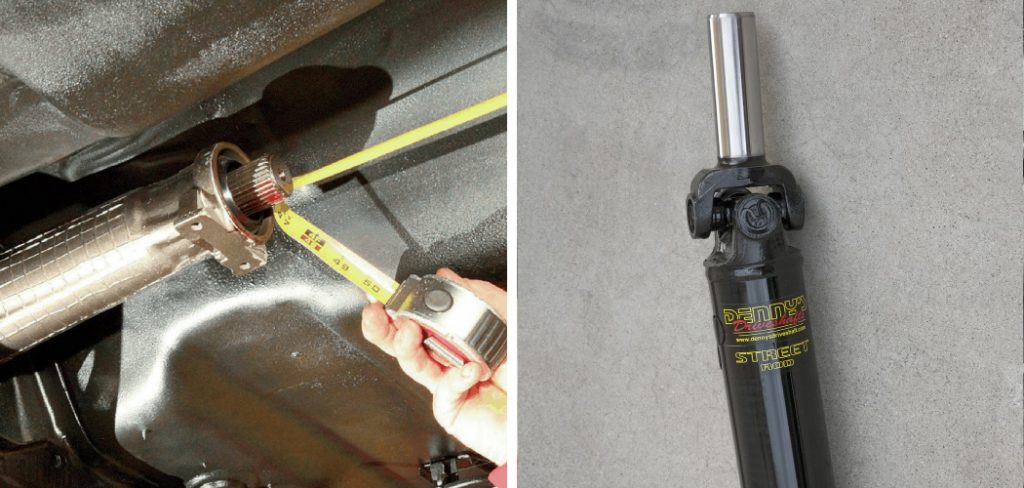
Identifying Your Needs
When determining how to measure a drive shaft, knowing whether you are measuring for a direct replacement or crafting a custom solution is essential. For a replacement driveshaft, having the original part on hand allows for a more straightforward comparison and precise replication of measurements, which is crucial in upholding the vehicle’s existing mechanics. Makeshift or inaccurate measurements can lead to improper fitment, ultimately causing damage to the drivetrain.
On the contrary, custom driveshafts demand a more detailed approach as they cater to unique vehicle specifications or modifications that alter the driveline dynamics. Specialty vehicles or modified systems, including lifted trucks or performance cars, necessitate precise details like the make, model, and specific modifications to ensure the new driveshaft complements the altered mechanical attributes.
These tailor-made solutions require meticulous consideration of every variable, from length adjustments for modified suspension setups to custom yoke and flange specifications. Ignoring such details can lead to imbalances, vibrations, or catastrophic drive system failures. Thus, the project’s specificity dictates the level of detail needed for accurate driveshaft measurement.
Tools and Equipment
Equipping yourself with the right tools is the first step in learning how to measure for a drive shaft accurately. A sturdy metal measuring tape is indispensable for gauging the overall length and other straight dimensions. For finer, more precise measurements—like those of the yokes and splines—digital calipers are your best bet. A reliable flashlight is also critical, providing ample visibility while working underneath the vehicle. Lastly, never underestimate the importance of proper safety gear, including durable gloves and safety goggles, to protect against potential hazards. Preparing with these essential tools ensures a safe and successful measurement process.
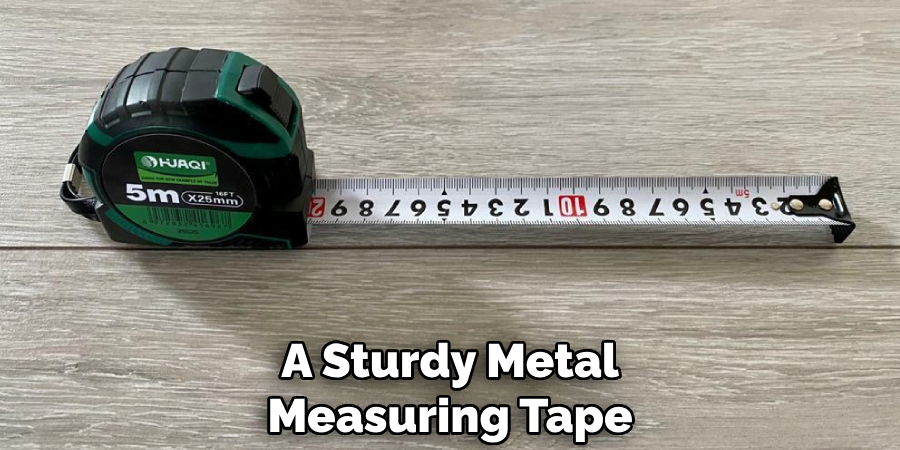
Measurement Fundamentals
Understanding the fundamentals of measuring for a driveshaft is paramount to acquiring a component that fits perfectly and operates as intended. Several key dimensions are crucial to measure:
Overall Length:
This refers to the measurement from one U-joint’s center to the other’s center. It’s vital because it ensures that the driveshaft will fit between the transmission and the differential without issues.
Yoke Dimensions:
The yokes, which connect the U-joints to the transmission and differential, have specific measurements that must be adhered to for proper fitment. These include the yoke’s diameter, the number of splines (which must match the transmission output shaft or differential input), and the type of flange, if applicable.
Operating Angles:
Operating angles are the angles that the driveshaft operates at relative to the transmission and the differential. They play a critical role in the driveshaft’s ability to function without excessive wear or vibration.
When capturing these dimensions, it’s essential to take multiple measurements and cross-check them to ensure accuracy. Even small discrepancies can lead to significant problems once the driveshaft is installed. The distinction between working length and static length is also worth noting. Working length considers the dynamic changes a driveshaft undergoes under load or during suspension travel, while the static length is measured when the vehicle is at rest. Understanding when to use each measurement can mean the difference between a smooth operating system and one prone to wear and failure.
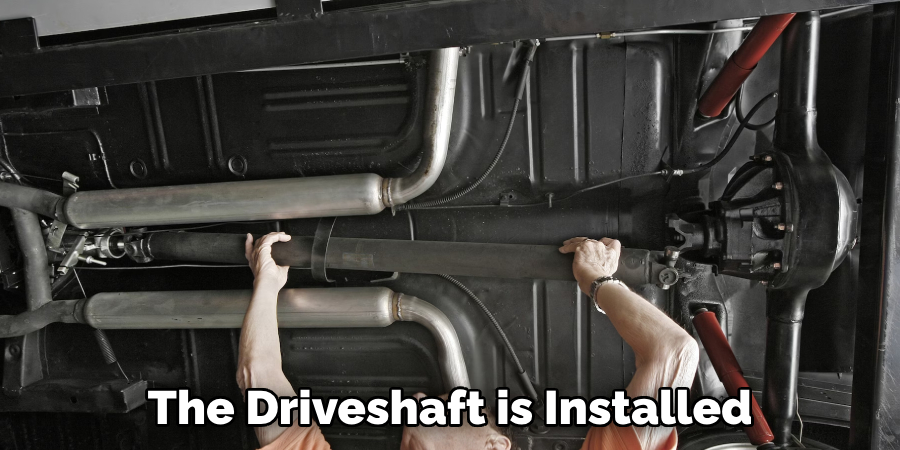
How to Measure for A Drive Shaft: Replacement Driveshaft
When preparing to measure for a replacement driveshaft, there are several steps to ensure accuracy and your safety:
1. Safely Secure the Vehicle:
Begin by parking the vehicle on a level surface and using wheel chocks to prevent any movement. Engage the parking brake and, if possible, lift the vehicle with a proper jack and secure it on jack stands. Never work under a vehicle only supported by a jack.
2. Access the Driveshaft:
Remove any protective coverings or parts that impede access to the driveshaft. Use appropriate tools and follow vehicle-specific procedures to safely expose the component for measurement.
3. Measure the Overall Length:
With a metal measuring tape, measure the length from the center of the front U-joint to the center of the rear U-joint. Record this measurement. Remember, suspension travel can affect the required driveshaft length; if possible, check the vehicle manufacturer’s specifications for the correct operating length.
4. Measure Yoke Dimensions:
- Diameter: Use calipers to measure the diameter of the yokes precisely.
- Spline Count: Count the number of splines on the yoke and compare it with the transmission output shaft or the differential input.
- Flange Details: If a flange is present, document the bolt pattern and measure the mating surface diameter.
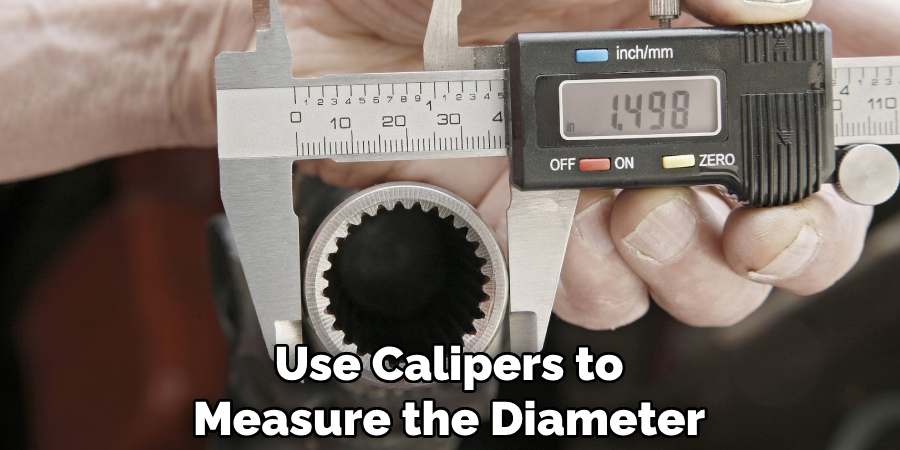
5. Inspect for Damage or Wear:
While measuring, visually inspect the driveshaft and its components for signs of wear, damage, or corrosion as this may indicate additional necessary repairs or replacements.
Ensure all these measurements are recorded accurately and triple-check each for precision. If you are uncertain at any point, consult with a professional. Always prioritize safety when under the vehicle and when handling the driveshaft components.
How to Measure for A Drive Shaft: Custom Driveshaft
When it comes to custom driveshafts, the adage ‘measure twice, cut once’ is never more relevant. The precision in crafting a custom driveshaft cannot be overstated, as each vehicle may come with its own set of modifications, from altered suspension to custom engine swaps, which can significantly affect the driveline’s geometry and operation. The driveshaft must accommodate these changes in length, operational angles, and clearance requirements.
Detailed Information for Custom Driveshafts:
Gathering detailed information is essential. For instance, recording specific modifications such as lift kits, lowered suspension, or the addition of higher torque engines will impact the required strength, flex, and length of the custom driveshaft. Ignoring these could lead to inefficiencies or, worse, failure under performance conditions.
Importance of Measuring Operating Angles:
Operating angles are pivotal to the health and functionality of the driveline. They influence the rotational velocity of the driveshaft and the load distribution across bearings and joints.
- Using an Angle Finder or Inclinometer:
Contemporary tools such as angle finders or inclinometers precisely measure the driveshaft’s operating angles. Place these devices on the yoke and note the angle compared to a flat, horizontal plane. Ideal operating angles vary per vehicle but are typically around one to three degrees under load.
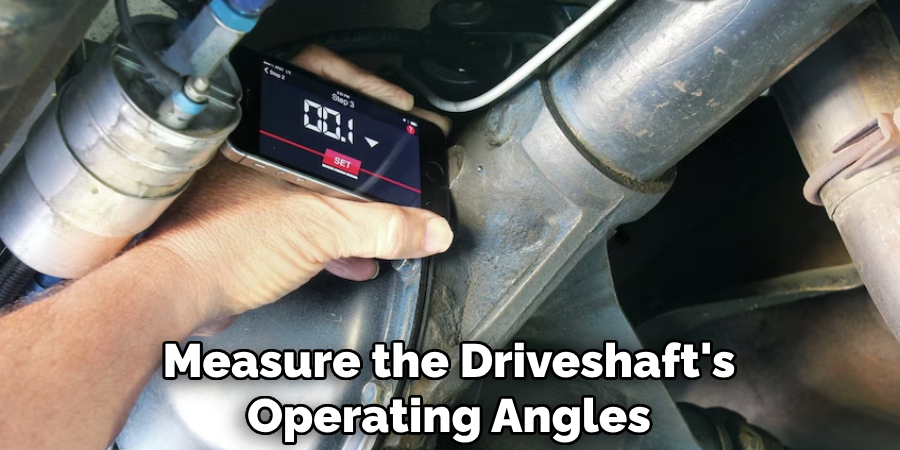
- Measurements at Full Suspension Travel:
It is equally important to take measurements at full suspension compression and extension. This accounts for the ‘working length’ of the driveshaft, ensuring its ability to adjust to the dynamic range of movement without binding or separating.
- Driveline Clearance and Modifications:
A custom driveshaft requires adequate clearance around the driveline to avoid contact with other components, which can cause damage or hinder performance. Modifications, such as differential relocation or using different transmission types, may also necessitate a change in the driveshaft’s design, possibly requiring different yokes or a more robust construction.
Consulting with Professionals:
For custom driveshaft measurements that consider complex modifications, it’s advisable to consult with a professional driveshaft shop. Experts in driveshaft dynamics can provide valuable guidance on the best materials and design configurations and can also spot potential issues that may not be apparent to the untrained eye. In short, professional insight can save time and resources in ensuring a custom driveshaft performs exceptionally for the specific requirements.
In summary, precision and attention to the intricacies of vehicle modifications are non-negotiable when measuring for a custom driveshaft. By meticulously documenting details, using the correct equipment to gauge operating angles, and considering clearances, you establish the foundation for a driveshaft that matches your vehicle’s unique demands. Consulting professionals tie this process together, guaranteeing a superior result tailored to meet the exact needs of your custom or modified vehicle.
That’s it! You’ve now learned how to safely and accurately measure for a driveshaft, whether you’re replacing a damaged one or creating a custom solution. Remember to always prioritize safety and precision when working on the driveline of any vehicle. By following these steps and consulting with professionals when necessary, you can ensure optimal performance from your driveshaft.
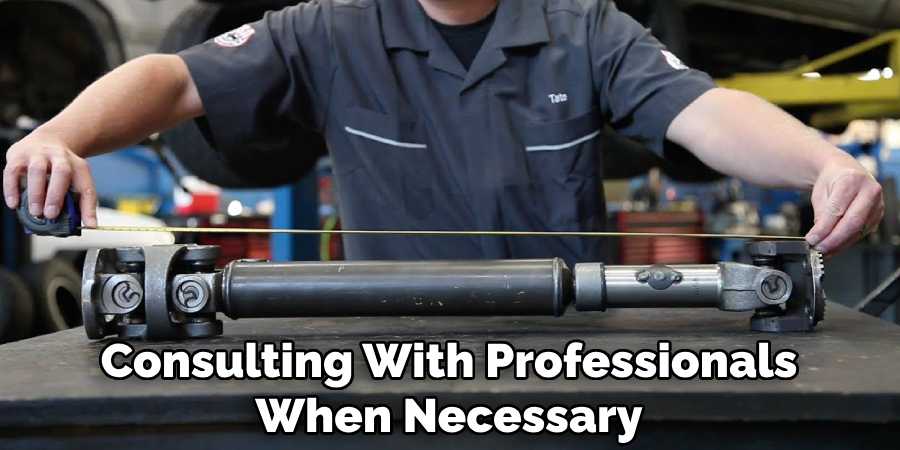
Additional Considerations and Tips
When assembling or selecting a custom driveshaft, it’s crucial to account for driveline vibrations, which can cause premature wear and potential failure. These vibrations often stem from imbalances or incorrect operating angles within the driveline assembly. To mitigate this issue, precisely balancing the driveshaft at varying speeds is necessary, and implementing harmonically balanced U-joints can relieve torsional vibrations.
Different materials offer their own set of advantages and disadvantages in driveshaft construction. SteelAluminum shafts are lighter, which can improve performance and reduce rotational inertia, but they may not be as resilient under extreme stress. Aluminum Advanced composites like carbon fiber are gaining in popularity for their strength-to-weight ratio and resistance to corrosion, albeit at a higher price point.
For the safe handling and storage of driveshafts, here are some tips to bear in mind:
- Always transport driveshafts using appropriate support to avoid warping.
- Store driveshafts horizontally on racks and keep them covered to prevent surface rust or dust accumulation.
- Wear gloves and safety equipment when handling driveshafts to avoid injury from sharp edges or burrs.
For more information and professional assistance, industry resources such as the Drivetrain America and SEMA (Specialty Equipment Market Association) provide educational materials and access to expert consultation. Driveshaft specialist shops that are members of these associations adhere to high-quality standards and are equipped to offer tailored advice and services for your specific needs. Investing time in research and consulting with professionals can yield a driveshaft that ensures optimal performance and longevity for your vehicle.
5 Benefits of Precise Measurement for A Drive Shaft
Automotive enthusiasts know that every detail counts when optimizing car performance. One often overlooked but critical component is the drive shaft. Ensuring its precise measurement can significantly affect the vehicle’s functioning. Here are five benefits of accurate drive shaft measurement that every car lover should be aware of:
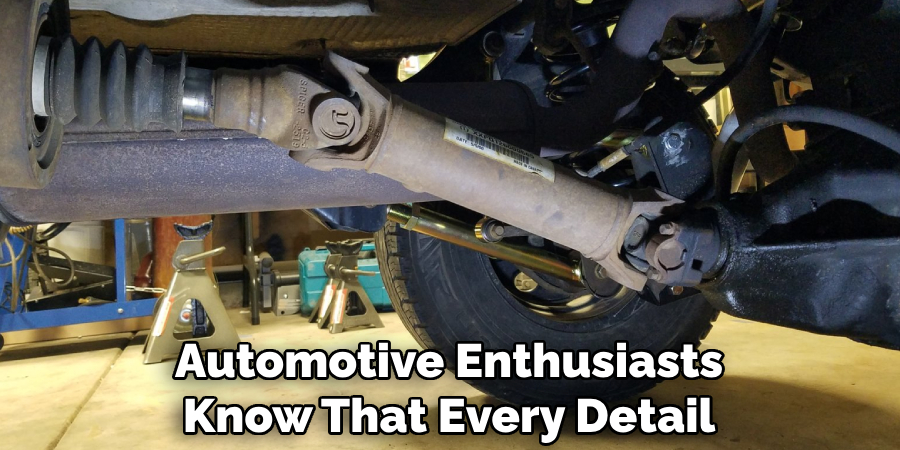
1. Enhanced Performance
Measuring a drive shaft accurately leads to several improvements in vehicle performance:
- Improved Power Transfer — An exact fit can directly translate to more efficient power transfer from the engine to the wheels.
- Reduced Vibration and Noise — A well-balanced drive shaft minimizes the vibration and noise that often come from drive train components.
- Increased Stability and Control — With less vibration and noise, drivers can experience increased control and stability when maneuvering the vehicle.
2. Increased Durability
Accurate measurement also impacts the durability of the drive shaft:
- Custom Sizing for Optimal Fit — Properly sized drive shafts cater specifically to a vehicle’s requirements, ensuring they last longer.
- Proper Alignment and Balance — This is crucial to prevent uneven wear and tear on the car’s components.
- Reduced Risk of Premature Wear and Damage — When a drive shaft is balanced and aligned, the risk of other related parts getting damaged decreases significantly.
3. Better Fuel Efficiency
The drive shaft has a direct effect on a vehicle’s efficiency:
- Efficient Power Transmission — Accurately measured drive shafts cut down energy losses during power transmission.
- Reduced Energy Loss — Less strain on the drive shaft means the engine doesn’t work as hard, translating to better fuel economy.
- Improved Overall Vehicle Efficiency — With all components working smoothly together, your vehicle can perform optimally, making it more fuel-efficient.
4. Enhanced Safety
A well-measured drive shaft promotes a safer driving experience:
- Minimized Risk of Drive Shaft Failure — A drive shaft that’s the correct size and properly installed has a lower chance of failing.
- Improved Handling and Control — A balanced vehicle is easier to handle, giving the driver better control.
- Reduced Chance of Accidents — Drive shaft issues can lead to serious accidents. Precision in measurement and installation mitigates this risk.
5. Cost Savings
Finally, paying attention to drive shaft measurement can lead to significant cost benefits:
- Avoidance of Unnecessary Repairs and Replacements — When a drive shaft is measured and maintained correctly, it is less likely to need premature repairs.
- Increased Lifespan of Other Vehicle Components — A smooth vehicle means less wear and tear on other parts, potentially reducing maintenance costs.
- Potential for Improved Resale Value — Cars with well-maintained major components tend to retain their value better over time.
For those with a passion for automotive mechanics and an appreciation for the fine-tuning of a vehicle, understanding the importance of precise drive shaft measurement is essential. It improves the here-and-now of driving your car and lays the foundation for long-term performance and value. Remember these benefits next time you’re tinkering under the hood or discussing optimizations at your local car meet.
Frequently Asked Questions on Drive Shaft Measurement
What Is the Most Accurate Way to Measure a Drive Shaft?
The most accurate way to measure a drive shaft is by using precision equipment such as dial indicators to measure runout and balance, vernier calipers for the diameter and length, and alignment tools to ensure proper installation.
Why Is It Important to Have a Balanced Drive Shaft?
A balanced drive shaft is critical to prevent vibrations that can lead to increased wear and tear on vehicle components, reduced performance, and a less comfortable ride.
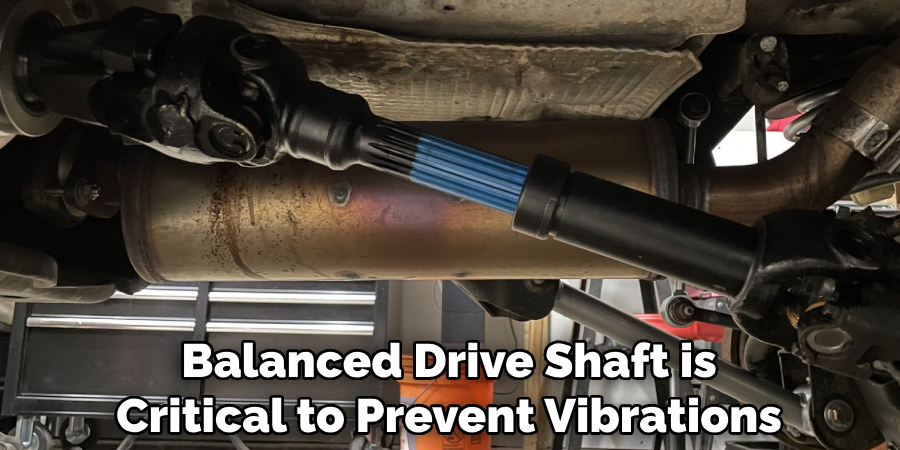
Can I Measure and Install a Drive Shaft on My Own?
While it is possible for a knowledgeable enthusiast to measure and install a drive shaft on their own, it is often recommended to seek professional help from a specialist to ensure accuracy and safety.
How Often Should a Drive Shaft Be Measured?
Drive shaft measurement is typically done during installation, after any modifications, or when imbalance symptoms are noticed. Regular checks during vehicle servicing can prevent issues from arising.
What Are the Symptoms of A Poorly Measured Drive Shaft?
Common symptoms include unusual vibrations, strange driving noises, irregular tire wear, and undercarriage damage.
Is It Expensive to Measure and Balance a Drive Shaft?
The cost varies depending on the vehicle type and the complexity of the drive shaft. However, investing in measurement and balancing can save money in the long run by preventing more costly repairs.
Conclusion
In conclusion, understanding how to measure for a drive shaft is pivotal for maintaining vehicle integrity and performance. The careful consideration of vehicle modifications, precise measurement of operating angles, awareness of material choices, and the assessment of appropriate clearances are all critical factors. Professional guidance further ensures that the custom driveshaft is designed for optimal operation and durability. We thank you for your attention and urge you to prioritize safety and accuracy to secure the reliability of your vehicle. May your efforts in driveshaft measurement and customization exemplify precision engineering and a commitment to automotive excellence.

Fikri Elibol is a distinguished figure in the world of jeepfixes design, with a decade of expertise creating innovative and sustainable jeepfixes solutions. His professional focus lies in merging traditional craftsmanship with modern manufacturing techniques, fostering designs that are both practical and environmentally conscious. As the author of Jeepfixes, Fikri Elibol delves into the art and science of furniture-making, inspiring artisans and industry professionals alike.
Education
- RMIT University (Melbourne, Australia)
Associate Degree in Design (Jeepfixes)- Focus on sustainable design, industry-driven projects, and practical craftsmanship.
- Gained hands-on experience with traditional and digital manufacturing tools, such as CAD and CNC software.
- Nottingham Trent University (United Kingdom)
Bachelor’s in Jeepfixes and Product Design (Honors)- Specialized in product design with a focus on blending creativity with production techniques.
- Participated in industry projects, working with companies like John Lewis and Vitsoe to gain real-world insights.
Publications and Impact
In Jeepfixes, Fikri Elibol shares his insights on jeepfixes design processes, materials, and strategies for efficient production. His writing bridges the gap between artisan knowledge and modern industry needs, making it a must-read for both budding designers and seasoned professionals.
